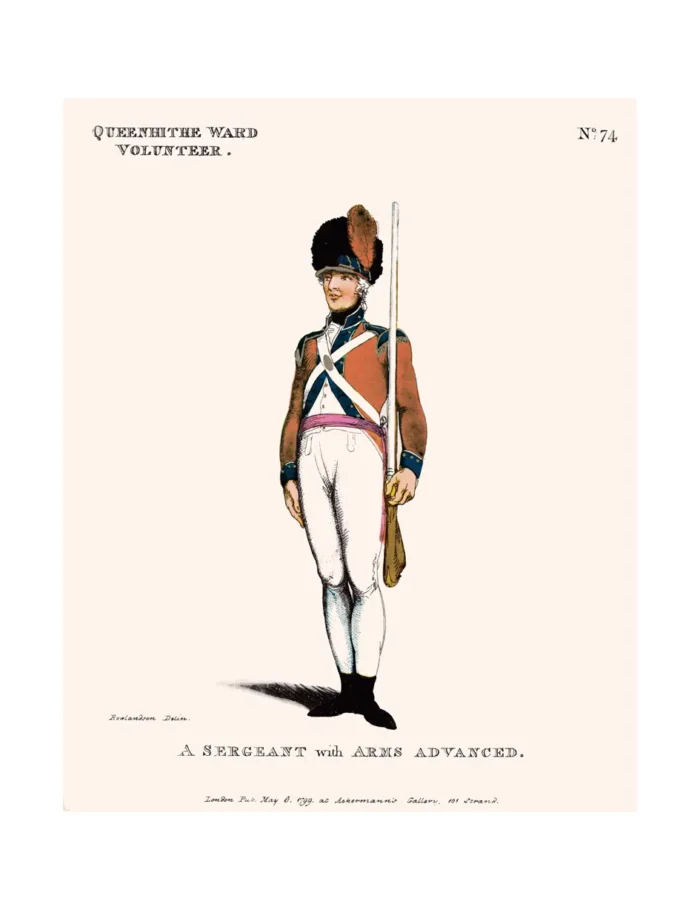No. 74 Queenhythe Volunteers
£12.50
Queenhithe Ward
Details below
Who were the Loyal Volunteers ? See here
Shipping cost is the SAME for 1 to 10 prints – see Shipping and Returns
In stock
Description

Queenhithe is a small and ancient ward of the City of London, situated by the River Thames and to the south of St. Paul’s Cathedral. (See map attached – click on it to expand). The Millennium Bridge crosses into the City at Queenhithe. Queenhithe is also the name of the ancient, but now disused, dock and a minor street, which runs along that dock, both of which are within the ward. The ward’s name derives from the “Queen’s Dock”, or “Queen’s Quay”, which was probably a Roman dock (or small harbour). The dock existed during the period when the Wessex king, Alfred the Great, re-established the City of London, circa 886 AD. It only became “Queenhithe” (spelt archaically as “Queenhythe”) when Matilda, wife of King Henry I, was granted duties on goods landed there. The Queenhithe dock remains today, but has long fallen out of use and is heavily silted up (being tidal). Queenhithe harbour was used for importing corn into London and continued to be in use into the 20th century, by the fur and tanning trades. Being upstream of London Bridge, however, meant that large sea-going sailing ships could no longer safely reach the dock from the sea. King Charles II landed at Queenhithe during the Great Fire of London in September 1666 to view the extent of the destruction and assist in the firefighting. The dock, including the wharf walls and adjacent street, was designated a Scheduled Ancient Monument in 1973; it is the only surviving inlet on the modern City’s waterfront. Its walls have been re-strengthened, as part of London’s flood defences. Bombing in the Blitz destroyed approximately three-quarters of the ward’s buildings: the only listed buildings are St Benet Paul’s Wharf Church, and the tower of the former St Mary Somerset Church.
A key sequence of the 1951 comedy The Lavender Hill Mob used Queenhithe as a location for filming: Mr. Holland, played by Alec Guinness, can be seen falling from a wharf into the Thames and being rescued by two actors dressed as police officers.
Additional information
| Weight | 0.0121 kg |
|---|---|
| Dimensions | 25 × 35 cm |






